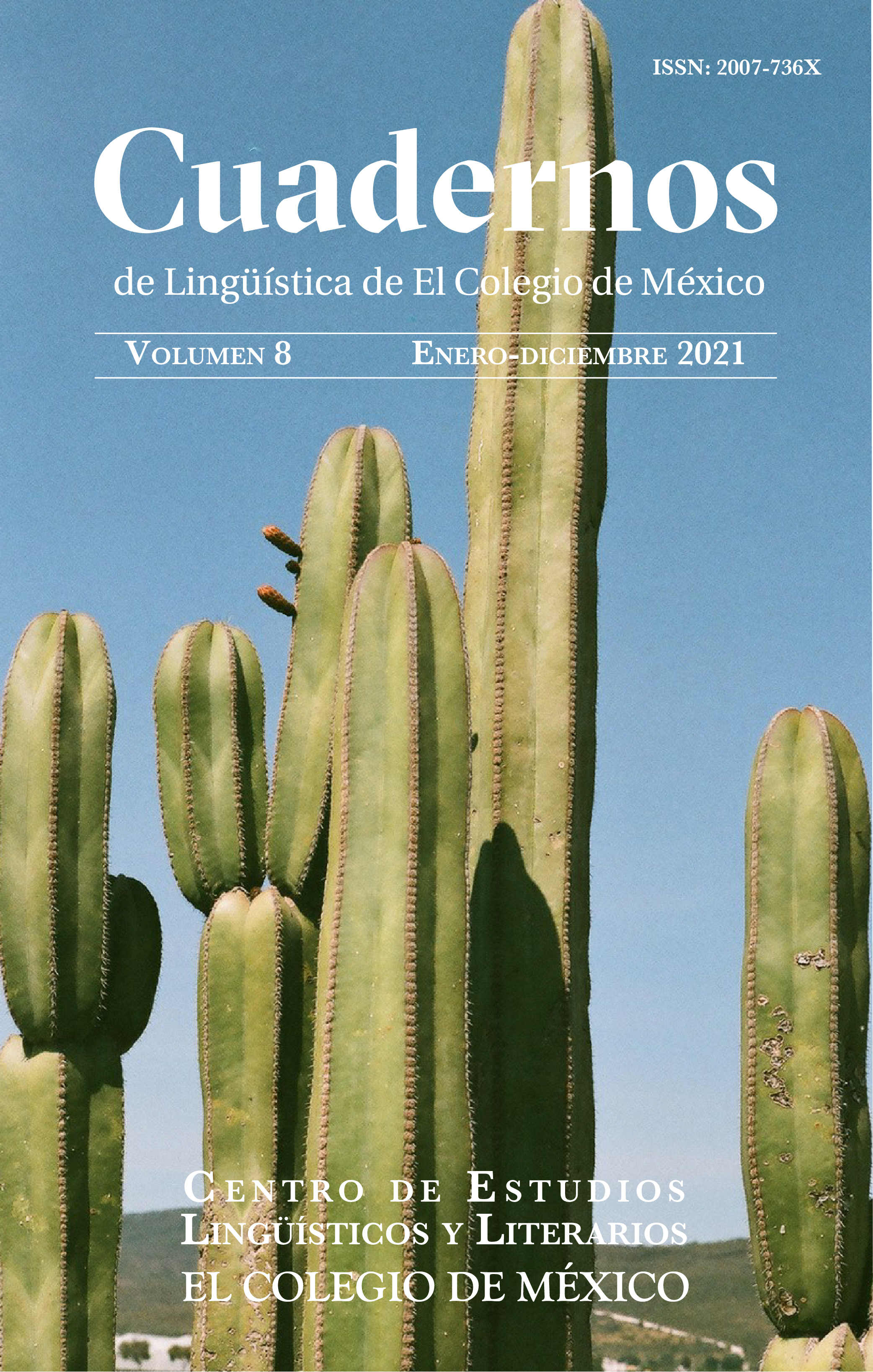The complexity of vowel epenthesis in Mazahua
DOI:
https://doi.org/10.24201/clecm.v8i0.234Keywords:
Mazahua, epenthesis, prosodic structure, vowel quality, optimality theoryAbstract
In this work, we focus on the analysis of vowel epenthesis in Mazahua, both regarding its motivation and the quality of the epenthetic vowels. The first aspect shows that epenthetic vowels allow the formation of syllabic trochaic feet from both nominal and verbal roots, which are underlyingly monosyllabic. When the suffix follows the roots, the epenthetic vowel is not necessary. In contrast, enclitics cannot be incorporated into the main foot of the phonological word. The second aspect shows that Mazahua has three types of epenthetic vowels: minimally marked, contextually colored, and mixed (partially unmarked and partially contextually colored). Such type of system has not been previously reported for any human language. We analyze this phenomenon within the Optimality Theory framework, and we propose a reformulation of the factorial typology of quality of the epenthetic segments by Kager (1999).
Downloads
Published
How to Cite
-
Abstract1012
-
PDF (Español)365
-
XML (Español)13
-
EPUB (Español)43
-
Kindle (Español)86
-
MP3 (Español)10
Issue
Section
License
Copyright (c) 2021 Arellanes Arellanes Francisco, Antonio Romero Hernández

This work is licensed under a Creative Commons Attribution-NonCommercial-NoDerivatives 4.0 International License.
Authors retain copyright of their work and are free to disseminate it, make copies for any use, and/or deposit in any repository or archive of their choice, but they grant Cuadernos de Lingüística de El Colegio de México the right to publish the work for the first time. Authors agree to acknowledge Cuadernos de Lingüística de El Colegio de México as the site of original publication of their article / note / review through proper citation.
Articles appearing in Cuadernos de Lingüística de El Colegio de México are made available to readers under a Attribution-NonCommercial-NoDerivatives 4.0 International.









